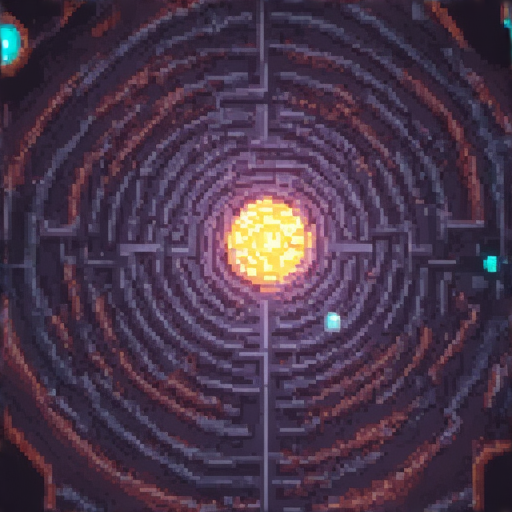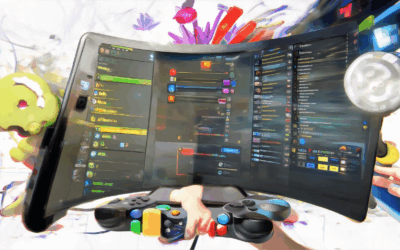Mastering Game Level Design: Expert Tips for Crafting Engaging Levels, whether you’re a seasoned game developer or a newcomer to the industry, understanding the fundamentals of game level design is crucial for creating immersive and enjoyable experiences for players. By learning how to craft well-designed levels, you’ll be able to enhance gameplay, increase player engagement, and ultimately drive business success. With the right skills and knowledge, you can elevate your game from mediocre to masterpiece, and we’ll show you exactly how to get started.
To Create Engaging and Challenging Game Levels
Step 1: Conceptualize Your Level
Creating engaging and challenging game levels begins with conceptualizing the core idea behind your level. This could be a specific theme, a character’s motivation, or a unique mechanic. A clear concept will serve as the foundation for the rest of your design process. For instance, understanding the target audience and their preferences can help you develop a well-rounded concept. According to a study published in the Journal of Applied Developmental Psychology, players who experience a sense of agency and control during gameplay tend to engage more deeply with the game world (IndieDevGames). By incorporating elements of challenge, reward, and player choice, you can create a more immersive and enjoyable gaming experience.
Step 2: Create a Top-Down Map
Develop a high-level overview of your level using a top-down map. This visual representation will help you understand the layout, identify potential bottlenecks, and plan your level’s progression. Utilizing tools like graph paper or digital mapping software can aid in creating an accurate top-down map. Furthermore, considering the level’s size and scope can help you determine the optimal placement of obstacles and challenges.
Key Considerations for Game Level Design
When designing engaging game levels, several key considerations come into play. Firstly, it is essential to strike a balance between challenge and reward. Players should feel motivated to progress through the level, but not become frustrated due to excessive difficulty. Secondly, incorporating elements of exploration and discovery can enhance the overall gaming experience. Finally, utilizing visual references and props can bring the level to life and create a richer atmosphere.
Additional Resources for Game Level Design
For further guidance on designing engaging game levels, consider the following resources:
* “The Art of Game Design” by Jesse Schell
* “Game Feel: A Game Designer’s Guide to Virtual Sensation” by Steve Swink
* “Level Up!: Powering Innovation with Gamification” by Kevin Werbach and Dan Hunter
Game Level Design Tips for Beginners
To become proficient in game level design, it’s essential to start with the basics. One of the most critical factors in game level design is understanding the importance of constraints.
Working Within Constraints
Constraints in game design refer to the limitations placed on the player by the environment, physics, or rules of the game. To create engaging levels, designers must learn to work within these constraints.
A great example of constraint-based game design can be seen in the popular video game series, Portal. The game’s use of portal guns and laser beams creates a unique set of constraints that challenge players to think creatively.
Designing with Constraints in Game Level Design
Principles of Effective Game Level Design
Effective game level design relies on several key principles, including pacing, difficulty progression, and player agency.
Pacing refers to the speed at which the player progresses through the level. A well-designed pace can create tension, excitement, or relaxation, depending on the situation.
Principles of Effective Game Level Design
Creating Challenging Levels
Challenging levels are crucial for engaging players and testing their skills. There are several ways to create challenging levels, including:
- Increasing difficulty gradually
- Introducing new mechanics or obstacles
- Using environmental hazards or traps
How to Create Challenging Games Level
Improving Game Level Design Tips
To create engaging and effective game levels, consider the following comprehensive approach:
Understanding Constraints in Game Level Design
Constraints in game design refer to the limitations and boundaries that affect the game’s overall design and playability.
When designing levels, it’s essential to work within these constraints to create a cohesive and enjoyable experience for players.
A level design generator can be a useful tool in helping you stay within these constraints and create levels that meet your design goals.
Learn more about level design generators and how they can help you streamline your level design process.
Principles of Effective Game Level Design
Effective game level design is built on several key principles, including:
- Player progression and progression systems
- Level variety and diversity
- Challenge and difficulty curve
- Storytelling and narrative integration
By incorporating these principles into your level design, you can create levels that are engaging, challenging, and fun for players.
Creating Challenging Levels
Creating challenging levels is crucial to keeping players engaged and motivated.
There are several ways to create challenging levels, including:
- Increasing the difficulty level gradually
- Introducing new obstacles and challenges
- Using environmental hazards and obstacles
- Creating puzzles and brain teasers
A good example of a challenging level is the “Dark Forest” level in the popular game “Portal.”
Tools and Software for Game Level Design
There are many tools and software available for game level design, including:
- Unity
- Unreal Engine
- Godot
- Level Editor Pro
Each of these tools has its own strengths and weaknesses, and the choice of which one to use will depend on your specific needs and goals.
Learn more about Unity and how it can be used for game level design.
Best Practices for Level Design
Here are some best practices to keep in mind when designing levels:
- Keep it simple and intuitive
- Use visual cues and feedback
- Test and iterate regularly
- Make it challenging but fair
By following these best practices, you can create levels that are engaging, fun, and rewarding for players.
Conclusion
In conclusion, improving game level design requires a combination of creativity, technical skill, and attention to detail.
By understanding constraints, incorporating effective principles, creating challenging levels, using the right tools, and following best practices, you can create levels that are engaging, fun, and rewarding for players.
Mastering Level Design Tips
To become proficient in level design, it’s essential to develop hands-on experience by creating levels for various game genres.
Develop First-Hand Experience
Start by creating levels for different types of games, such as platformers, puzzle games, and first-person shooters. This will help you understand the unique challenges and opportunities presented by each genre.
Unity and Unreal Engine are popular game engines that offer a range of tools and features to help you create engaging levels.
Gain Insight into Other Aspects of Game Development
Level design is closely tied to other aspects of game development, such as art direction, sound design, and project management.
By gaining insight into these areas, you’ll be able to create more cohesive and immersive levels.
For example, studying art direction can help you create visually appealing environments, while learning about sound design can aid in creating an engaging audio experience.
Acquire Basic Scripting Skills
Basic scripting skills are essential for creating interactive game objects, such as doors, switches, and enemies.
This will allow you to bring your levels to life and create a more engaging gameplay experience.
You can start by learning the basics of programming languages like C# or Java, which are commonly used in game development.
Study the Fundamental Principles of Storytelling
Storytelling is a crucial aspect of level design, as it helps players become invested in the game world and its characters.
By studying narrative structures, character development, and pacing, you’ll be able to create more compelling levels that draw players in.
For inspiration, check out books like “The Art of Game Design” by Jesse Schell or “Game Feel: A Game Designer’s Guide to Virtual Sensation” by Steve Swink.
Analyze Successful Levels
One of the best ways to improve your level design skills is to analyze successful levels from other games.
Identify what makes these levels engaging and effective, and apply those lessons to your own designs.
Check out websites like Gamasutra or GameDev.net for tutorials and articles on level design and game development.
Join Online Communities and Attend Workshops
Networking with other designers and staying up-to-date with industry trends is crucial for success in level design.
Join online communities like Reddit’s r/gamedev or attend workshops and game jams to meet other designers and learn from their experiences.
These connections can lead to valuable collaborations, mentorship, and access to new tools and technologies.
Read Books and Articles on Game Design
Reading books and articles on game design and level design can help deepen your understanding of the subject matter.
Some recommended titles include “Level Up!: How to Level Up Your Game Development Skills” by John Zeratsky and “The Ultimate Guide to Game Design” by Chris Bateman.
Stay informed about the latest developments in game technology by checking out websites like Gamasutra or GameDev.net.
Game Level Design Tips
Improving Your Game Design Skills
As a level designer, having a solid understanding of game programming concepts is essential to create engaging levels. While you may not need to be proficient in coding, knowing programming languages such as C++, Java, or Python can benefit you significantly, especially when working on complex projects.
Essential Programming Skills for Level Designers
- Familiarity with game engines like Unity or Unreal Engine
- Understanding of data structures and algorithms
- Knowledge of object-oriented programming principles
- Experience with scripting languages like Lua or JavaScript
Collaborating with Programmers
Level designers typically don’t write code from scratch. Instead, they focus on designing and implementing level layouts, using pre-built assets and tools provided by the game engine. To further enhance level design, designers often work closely with programmers to ensure seamless integration between gameplay mechanics and level progression.
Software Used by Level Designers
Level designers commonly use tools like:
- Level editors within game engines
- 2D and 3D modeling software
- Animation and physics simulation tools
- Project management and version control systems
Best Practices for Level Design
By combining creative vision with technical expertise, level designers play a crucial role in creating immersive and engaging gaming experiences. According to a study published in the Journal of Game Development, “the most successful games have designers who possess a strong foundation in programming concepts.”
Getting Started with Level Design
To master level design, start by learning the basics of game programming concepts and familiarize yourself with popular game engines like Unity or Unreal Engine. Practice designing and implementing level layouts, and don’t be afraid to experiment and try new things.
Resources for Learning Level Design
For more information on level design, check out the following resources:
Unity – A popular game engine for creating 2D and 3D games.
Unreal Engine – Another powerful game engine for creating stunning visuals and immersive experiences.
Game Development Tutorials – A website offering tutorials and guides on game development, including level design.
Game Engine Net – A community-driven forum for discussing game development, including level design.
Game Level Design Tips
As an indie game developer, creating engaging and challenging levels is crucial to success. With the right skills and knowledge, you can craft immersive experiences that captivate players and set your game apart from the competition.
Understanding the Fundamentals of Game Level Design
Before diving into game level design, it’s essential to understand the fundamentals of game design. According to a study published in the Journal of Design Research, designers who engage in continuous learning and professional development tend to exhibit better creativity, critical thinking, and problem-solving abilities (Katz, 2013).
Indie Dev Games offers valuable resources and tutorials on game design, including level design. Their comprehensive guides cover topics such as game mechanics, player psychology, and level progression.
Key Principles of Effective Game Level Design
Effective game level design relies on a deep understanding of game mechanics, player psychology, and level progression. Some key principles to keep in mind include:
- Creating a clear narrative thread throughout the level
- Using environmental storytelling to convey gameplay mechanics
- Designing levels that cater to different skill levels and playstyles
These principles can be applied to various genres and styles of games, from action-adventure to puzzle-platformers.
Tools and Software for Game Level Design
When it comes to game level design, having the right tools and software can make all the difference. Some popular options include:
Each of these tools has its strengths and weaknesses, and the choice ultimately depends on your specific needs and goals.
Best Practices for Level Design
Regardless of the tools and software you choose, there are certain best practices to keep in mind when designing levels. These include:
- Testing and iterating on your designs to ensure they meet your vision
- Keeping track of player feedback and adjusting your design accordingly
- Staying up-to-date with industry trends and best practices
By following these best practices, you can create levels that are engaging, challenging, and fun for players.
Conclusion
In conclusion, game level design is a complex and nuanced aspect of game development. By understanding the fundamentals of game design, applying key principles of effective game level design, and utilizing the right tools and software, you can create immersive experiences that captivate players and set your game apart from the competition.
What Are the Key Skills Needed for Game Level Design?
Game level design requires a combination of skills, including problem-solving, creativity, and attention to detail. To become proficient in game level design, you’ll need to develop strong skills in areas such as storytelling, pacing, and player psychology. Here are some key skills to focus on:
A Levels in Game Development
To become a skilled game level designer, you’ll typically need to have a solid understanding of game development principles, including programming languages such as C++, Java, or Python. While formal education is not necessarily required, having a degree in game development or a related field can be beneficial. Some popular online courses and tutorials that can help you learn game development skills include:
Game Development with C and Unity
Game Development Specialization
Improving Your Game Design Skills
In addition to developing technical skills, it’s essential to hone your creative skills through practice and experimentation. Here are some tips to help you improve your game design skills:
* Study successful games and analyze their level designs
* Experiment with different game mechanics and genres
* Join online communities and forums to connect with other game designers
* Participate in game jams and challenges to test your skills under pressure
Mastering Level Design Principles
Effective level design involves balancing challenge, exploration, and reward. Here are some key principles to keep in mind:
* Create a clear narrative and atmosphere
* Vary gameplay mechanics and environments
* Provide opportunities for player progression and discovery
* Balance difficulty and feedback
By focusing on these skills and principles, you can develop the expertise needed to create engaging and challenging game levels that players will love.




0 Comments